Manual to Automatic Gearbox Conversion: A Comprehensive Guide
This comprehensive guide explores the process of converting a manual transmission to an automatic gearbox, offering insights into benefits, challenges, and expert installation for a seamless transition.
Converting a vehicle from manual to automatic transmission involves replacing the manual gearbox with an automatic one, often requiring modifications to the drivetrain and electrical systems. This process enhances driving convenience, particularly in heavy traffic, and can improve towing capacity. While the conversion offers benefits like smoother gear shifts and reduced driver fatigue, it is technically complex and costly. Compatibility, tools, and professional expertise are crucial for success. This section introduces the fundamental concepts of manual-to-automatic conversion, outlining its purpose, benefits, and challenges, while providing a foundation for understanding the detailed steps and considerations explored in subsequent sections.
Understanding Manual and Automatic Transmissions
A manual transmission requires the driver to manually shift gears using a clutch pedal and gearshift, offering control over gear selection. In contrast, an automatic transmission automatically changes gears based on driving conditions, eliminating the need for manual intervention; The manual gearbox typically includes 5-6 forward gears, reverse, and neutral, while automatics feature a simpler selector with drive, reverse, and neutral modes. The structural differences between the two systems are significant, with manuals relying on a clutch and flywheel and automatics using a torque converter to facilitate seamless gear transitions. Understanding these mechanisms is crucial for appreciating the complexities of conversion.

Evaluating the Need for Conversion
Evaluating the need for conversion involves assessing driving habits, lifestyle, and vehicle use. Consider factors like convenience, medical needs, urban traffic demands, and market resale value.
Pros of Converting to an Automatic Gearbox
Converting to an automatic gearbox offers enhanced convenience, especially in heavy traffic or long drives, eliminating the need for manual gear shifting. It reduces driver fatigue and stress, making urban commuting smoother. Automatic transmissions are ideal for individuals with physical limitations or medical conditions that make clutch operation difficult. They also provide a seamless driving experience for novice drivers. Additionally, automatics often improve towing capacity and can boost resale value in markets favoring automatic vehicles. The convenience and ease of use make it a practical choice for professional drivers or families sharing a vehicle. Overall, it enhances comfort and accessibility for various driving scenarios.
Cons of Converting to an Automatic Gearbox
Converting to an automatic gearbox can be costly, with expenses ranging from $15,000 to $30,000, depending on the vehicle and method. It may also reduce fuel efficiency in some cases, as automatic transmissions generally consume more fuel than manuals. Additionally, the process is technically complex, requiring specialized tools and expertise, which can lead to potential installation errors. The conversion may also void the vehicle’s warranty or cause compatibility issues with other components. Furthermore, purists may lament the loss of driver engagement and control that comes with manual shifting. The decision should weigh these drawbacks against the benefits of convenience and ease of use.
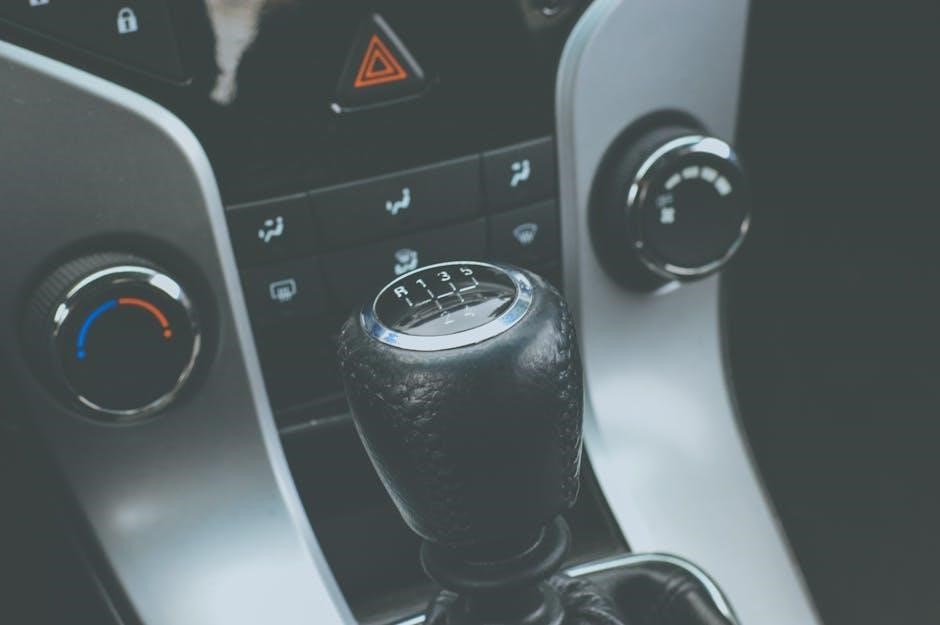
Choosing the Right Conversion Method
Selecting the ideal conversion method involves weighing DIY kits, professional installations, and modern retrofitting options, each offering unique benefits depending on skill level, budget, and vehicle compatibility.
DIY Conversion Kits
DIY conversion kits are a cost-effective solution for manually skilled individuals, offering pre-assembled components like the automatic gearbox, torque converter, and necessary adapters. These kits simplify the process for those with mechanical expertise, providing detailed instructions and compatible parts. However, success hinges on precise compatibility checks and proper installation tools. While they save on labor costs, challenges like electrical system integration and drivetrain modifications require careful attention. Suitable for enthusiasts, DIY kits enable a seamless transition from manual to automatic, ensuring enhanced driving convenience without professional assistance, provided the installer possesses the requisite skills and knowledge.
Professional Installation Services
Professional installation services offer a reliable and efficient way to handle the complexities of manual to automatic gearbox conversion. Experienced technicians ensure precise compatibility checks and seamless integration of components. They handle intricate tasks like electrical system modifications, drivetrain adjustments, and transmission control unit calibration. While more costly than DIY kits, professional services minimize risks of errors and ensure optimal performance. They are ideal for those lacking mechanical expertise, providing peace of mind and a warranty on labor and parts. This approach guarantees a smooth transition, enhancing driving convenience without the need for personal involvement in the technical process.
Retrofitting Modern Automatic Systems
Retrofitting modern automatic systems involves integrating advanced transmission technology into older or manual vehicles, enhancing performance and convenience. This method often requires updating the vehicle’s electrical and computer systems to support modern automatic gearboxes. Compatibility is crucial, as newer systems may demand specific software and hardware adaptations. The process ensures seamless operation, offering features like smoother shifting, improved fuel efficiency, and better responsiveness. Retrofitting is ideal for classic or high-value vehicles, allowing owners to maintain their car’s character while benefiting from contemporary driving comfort. Professional expertise is essential to ensure proper installation and functionality, making it a viable option for those seeking a modernized driving experience.
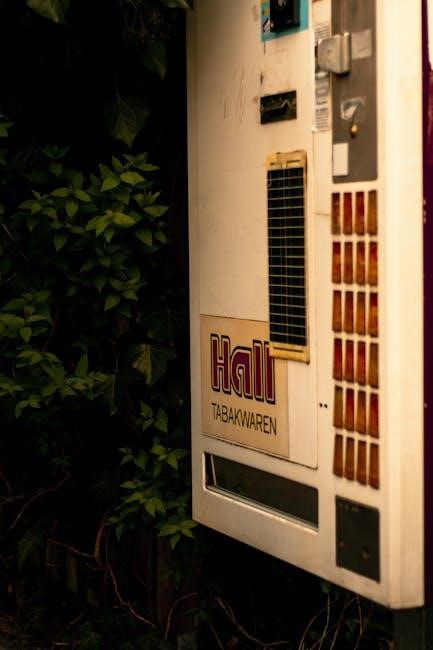
Preparing for the Conversion Process
Preparing for a manual to automatic gearbox conversion involves assessing vehicle compatibility, budgeting for parts and labor, and ensuring necessary tools and expertise are available to execute the complex process successfully.
Assessing Vehicle Compatibility
Assessing vehicle compatibility is crucial for a successful manual to automatic gearbox conversion. The process begins with identifying the make and model of your vehicle to determine the specific parts required. Compatibility checks involve evaluating the existing transmission type, drivetrain components, and electrical systems to ensure they can support an automatic gearbox. Modifications may be necessary to align the drivetrain and integrate electrical systems seamlessly. It is essential to consult professional mechanics or specialists to verify compatibility and avoid potential issues during the conversion. Proper assessment ensures a smooth transition and prevents costly setbacks, making it a critical first step in the process.
Essential Tools and Equipment
Conducting a manual to automatic gearbox conversion requires specialized tools and equipment to ensure precision and safety. A transmission jack is essential for safely lifting and moving the heavy gearbox. A comprehensive socket set, including metric and SAE sizes, is necessary for disassembling the manual transmission. A torque wrench is critical for proper torque specifications during reassembly. Additionally, wiring harness tools and diagnostic equipment are needed for integrating the automatic transmission’s electrical systems. A hydraulic press may be required for bearing and bushing replacements. Proper tools and equipment are vital for a successful conversion, minimizing risks and ensuring compatibility with the vehicle’s specifications.
Budgeting for the Conversion
Budgeting for a manual to automatic gearbox conversion requires careful planning, as costs vary widely depending on the vehicle and conversion method. DIY kits can range from $1,500 to $10,000, while professional installations often fall between $15,000 and $30,000. Factors influencing costs include the vehicle’s make and model, the type of automatic transmission chosen, and additional modifications such as wiring, drivetrain adjustments, and labor fees. It’s essential to research specific requirements for your vehicle and consider long-term maintenance costs. Creating a detailed budget will help ensure the conversion stays financially manageable while meeting your performance and convenience expectations.
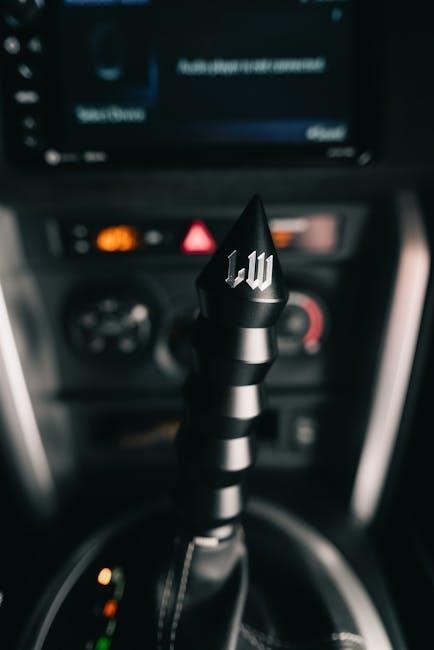
Technical Aspects of the Conversion
Converting a manual to automatic involves removing the manual transmission, installing the automatic gearbox, and modifying drivetrain components for compatibility. Electrical system adjustments are also necessary.
Removing the Manual Transmission
Removing the manual transmission is a complex process requiring mechanical expertise. It involves disconnecting the battery, draining transmission fluid, and lifting the vehicle securely. The clutch and gear linkages must be detached, and electrical connectors severed. The transmission mount is then removed to access the unit. Extreme caution is advised to avoid damage to surrounding components. Proper tools and a clean workspace are essential. If unfamiliar with the process, professional assistance is recommended to ensure safety and prevent costly mistakes. This step is critical for a successful conversion, as improper removal can lead to further complications down the line.
Installing the Automatic Gearbox
Installing the automatic gearbox involves precise alignment and secure mounting to ensure compatibility with the engine and drivetrain. The transmission must be properly positioned, and the torque converter attached to the flywheel. Electrical connections for sensors and solenoids are reconnected to the vehicle’s computer system. The driveshaft is reinstalled, and fluid levels are checked. Compatibility between the automatic gearbox and the vehicle’s existing systems is crucial to avoid mechanical issues. Specialized tools and expertise are often required to ensure proper installation and functionality. Post-installation testing is essential to verify smooth operation and address any potential issues before finalizing the conversion.
Modifying the Drivetrain
Modifying the drivetrain is essential to ensure compatibility with the newly installed automatic gearbox. This includes adjusting the driveshaft length and ensuring the differential ratio aligns with the transmission’s specifications. The torque converter replaces the clutch, requiring precise alignment with the engine’s flywheel. Additionally, engine mounts may need reinforcement to accommodate the added weight and torque characteristics of the automatic system. Proper drivetrain modification ensures smooth power delivery and prevents mechanical stress. Expertise is often required to balance these components effectively, avoiding vibration and potential damage. These adjustments are critical for achieving optimal performance and reliability post-conversion.
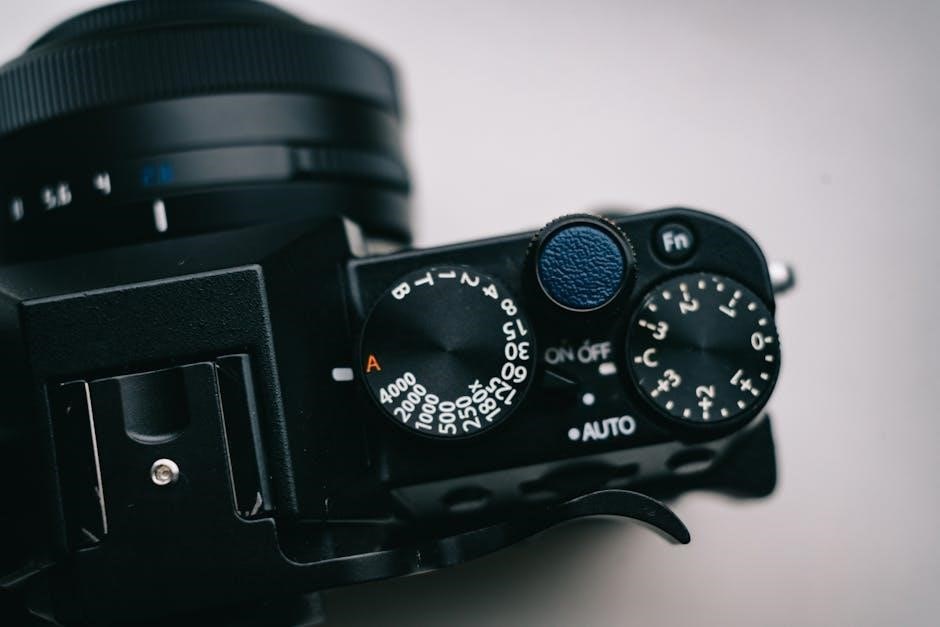
Electrical and Computer System Integration
Integrating electrical systems involves wiring modifications, sensor installations, and calibrating the transmission control unit to ensure seamless communication with the vehicle’s computer systems for optimal functionality.
Understanding Wiring and Sensors
Converting a manual to an automatic transmission requires a detailed understanding of the vehicle’s wiring and sensor systems. The process involves integrating new sensors to monitor gear shifts, torque, and engine speed, ensuring smooth communication between the automatic gearbox and the vehicle’s computer. Wiring modifications are necessary to connect the transmission control unit (TCU) with the engine control module (ECM) for precise synchronization. Sensors like speed sensors, pressure switches, and temperature sensors play a critical role in regulating automatic shifts. Compatibility and precision are essential to avoid system malfunctions. Professional expertise is often recommended to handle complex electrical integration effectively.
Calibrating the Transmission Control Unit
Calibrating the Transmission Control Unit (TCU) is a critical step in ensuring the automatic gearbox operates seamlessly. The TCU must be programmed to align with the vehicle’s engine and drivetrain specifications. This involves setting parameters such as shift points, torque limits, and gear ratios using specialized software tools. The calibration process requires real-time data analysis to fine-tune the system for optimal performance. Proper calibration ensures smooth gear transitions, improved fuel efficiency, and enhanced driving comfort. Professional expertise is often necessary to achieve precise settings, as incorrect calibration can lead to poor transmission performance or even system failure. Post-calibration testing is essential to verify functionality under various driving conditions.

Post-Conversion Adjustments
Post-conversion adjustments ensure optimal performance, including clutch pedal alignment, gear shift calibration, and thorough testing to confirm smooth operation and compatibility with the vehicle’s systems.
Adjusting the Clutch Pedal
Adjusting the clutch pedal is crucial after a manual-to-automatic conversion to ensure smooth operation. The clutch pedal, now redundant, must be secured or removed to prevent accidental engagement. Calibration of the pedal’s position and sensor integration ensures the system recognizes the absence of manual input. Proper alignment prevents false signals to the transmission control unit, avoiding erratic gear shifts. Mechanical adjustments may involve disabling the clutch master cylinder or installing a pedal cover. Electrical adjustments ensure compatibility with the new automatic system. Professional assistance is recommended to avoid errors and guarantee functionality. This step ensures a seamless transition to automatic driving.
Calibrating Gear Shifts
Calibrating gear shifts is essential after a manual-to-automatic conversion to ensure smooth and precise transmission operation. This process involves configuring the transmission control unit (TCU) to recognize and adapt to the new automatic system. Proper calibration ensures seamless gear transitions, optimal acceleration, and improved fuel efficiency. The TCU must synchronize with throttle sensors, torque converters, and gear actuators to maintain consistent performance. Specialized tools and software are required for accurate calibration. Improper calibration can lead to jerky shifts, delayed engagement, or transmission faults. Professional technicians often perform this step to guarantee reliability and performance. This ensures the vehicle operates as intended post-conversion.
Final Testing and Quality Assurance
Final testing is crucial to ensure the automatic gearbox operates flawlessly after conversion. This involves checking smooth gear transitions, proper engagement, and consistent performance under various driving conditions. Test drives in both city traffic and highway settings help verify responsiveness and reliability. Inspect for any leaks, unusual noises, or hesitation during acceleration. Electrical systems, including sensors and the transmission control unit, must function seamlessly. A thorough quality assurance process ensures the conversion meets safety and performance standards. Expert technicians often conduct these tests to confirm the vehicle is roadworthy and ready for daily use, providing peace of mind for the driver.

Cost Implications and Considerations
Manual to automatic gearbox conversion costs vary, influenced by parts, labor, and installation method. DIY kits start around $15,000, while professional installs can exceed $30,000. Insurance and vehicle value changes may apply.
Parts and Labor Costs
Manual to automatic gearbox conversion involves significant expenses, primarily for parts and labor. Automatic transmissions themselves can range from $5,000 to $15,000, depending on the model and quality. Conversion kits, including essential components like torque converters and adapters, add another $3,000 to $8,000. Labor costs vary widely, with professional installations starting at $2,000 and potentially exceeding $10,000 for complex jobs. Additional expenses may include custom fabrication, wiring harnesses, and sensors. DIY projects save on labor but require specialized tools and expertise. Overall, the total cost can range from $15,000 to $30,000 or more, depending on the vehicle and conversion complexity.
Insurance and Legal Considerations
Converting a manual transmission to an automatic gearbox requires careful consideration of insurance and legal implications. Notify your insurance provider, as the conversion may alter the vehicle’s value and insurance premium. The modified vehicle must comply with local safety and emissions regulations. Professional installation is often mandated for warranty and legal compliance. Additionally, some jurisdictions may require inspections or certifications for aftermarket modifications. Failure to comply could result in legal penalties or invalidation of insurance coverage. Ensure all modifications meet legal standards and are documented to avoid future issues.

Maintenance and Performance Expectations
Regular servicing of the automatic gearbox ensures optimal performance and longevity. Expect smoother driving and consistent power delivery, though fuel efficiency may slightly decrease compared to manual transmissions.
Long-Term Maintenance Requirements
Regular servicing is crucial for maintaining the health of an automatic gearbox post-conversion. Routine checks include transmission fluid levels, filter replacements, and sensor calibrations. Fluid changes are recommended every 30,000 to 60,000 miles, depending on usage. Ensure the coolant system is functioning properly to prevent overheating. Additionally, monitor the torque converter and solenoid pack for wear. Professional inspections every 12,000 miles can detect early signs of damage. Proper maintenance ensures smooth gear shifts, optimal performance, and extends the gearbox’s lifespan. Ignoring routine care can lead to costly repairs, such as replacing the entire transmission. Plan for annual maintenance costs of $300 to $1,000.
Performance Differences Post-Conversion
Converting to an automatic gearbox can result in smoother and more seamless gear shifts, reducing driver fatigue in heavy traffic. Automatic transmissions often provide better low-speed maneuverability and adaptability to varying driving conditions. However, some drivers may notice a slight reduction in fuel efficiency compared to manual transmissions. The automatic system’s torque converter can also introduce a minor delay in acceleration response. For high-performance vehicles, the loss of manual control over gear shifts might affect driving dynamics. Overall, the trade-off is between convenience and potential performance nuances, making it essential to align expectations with the vehicle’s intended use post-conversion.
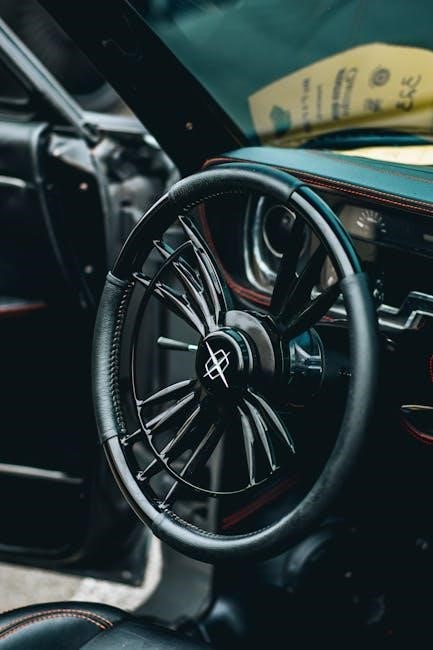
Case Studies and Real-World Examples
Real-world examples, such as the BMW E39 manual-to-automatic conversion and Volvo Cross Country projects, demonstrate successful transitions, highlighting ease of driving and reduced maintenance post-conversion.
Successful Conversion Stories
Successful conversion stories highlight the benefits and complexities of transitioning from manual to automatic gearboxes. For instance, a BMW E39 5-series manual-to-automatic conversion demonstrated seamless integration, enhancing urban driving convenience. Similarly, a Volvo Cross Country project achieved a smooth transition, reducing maintenance needs. These real-world examples showcase how modern automatic systems can be retrofitted into older models with proper planning and expertise. Many enthusiasts have reported improved driving experiences, especially in heavy traffic, post-conversion. While challenges exist, these success stories prove that manual-to-automatic conversions can be rewarding, offering a blend of convenience and performance tailored to individual preferences and vehicle specifications.
Challenges and Lessons Learned
Converting a manual to an automatic gearbox presents several challenges, including high costs, technical complexities, and compatibility issues. One major hurdle is ensuring the automatic transmission aligns with the vehicle’s existing drivetrain and electrical systems. Another challenge is sourcing the right parts and tools, which can be time-consuming and costly. Lessons learned from successful conversions emphasize the importance of thorough planning, compatibility checks, and professional expertise. DIY attempts often require advanced mechanical skills, and even then, unexpected issues can arise. Proper research and budgeting are crucial to avoid financial pitfalls. Overall, while rewarding, the process demands careful consideration and execution.
Converting a manual transmission to an automatic gearbox offers a convenient driving experience, especially in heavy traffic and urban settings. While the process can be complex and costly, it provides a seamless transition for those seeking ease of use. However, it’s crucial to weigh the benefits against potential drawbacks, such as higher costs and compatibility challenges. Proper planning, professional expertise, and thorough research are essential for a successful conversion. Ultimately, the decision should align with individual needs, driving habits, and long-term goals. For many, the convenience of an automatic transmission makes the effort worthwhile, enhancing overall driving satisfaction.